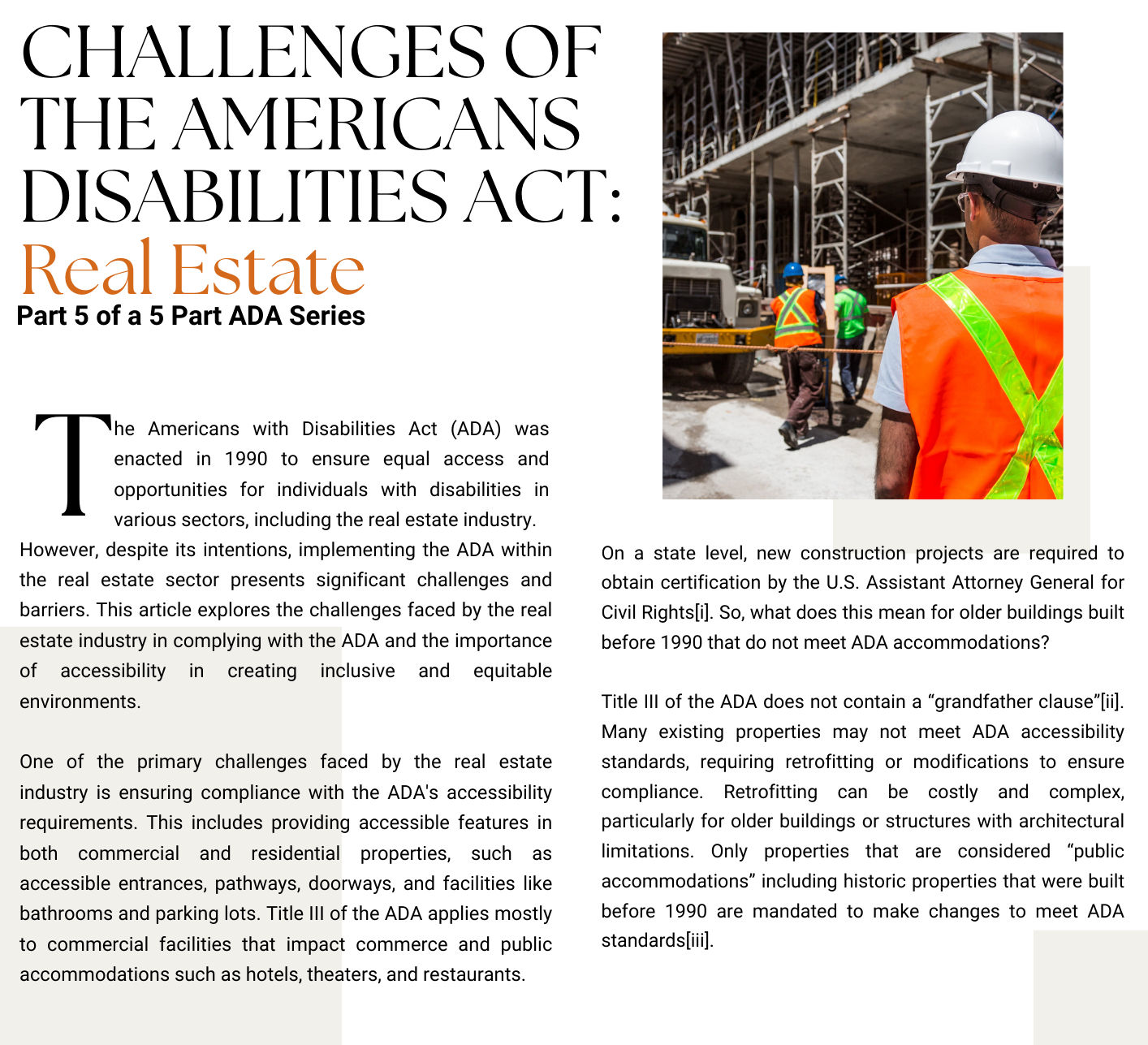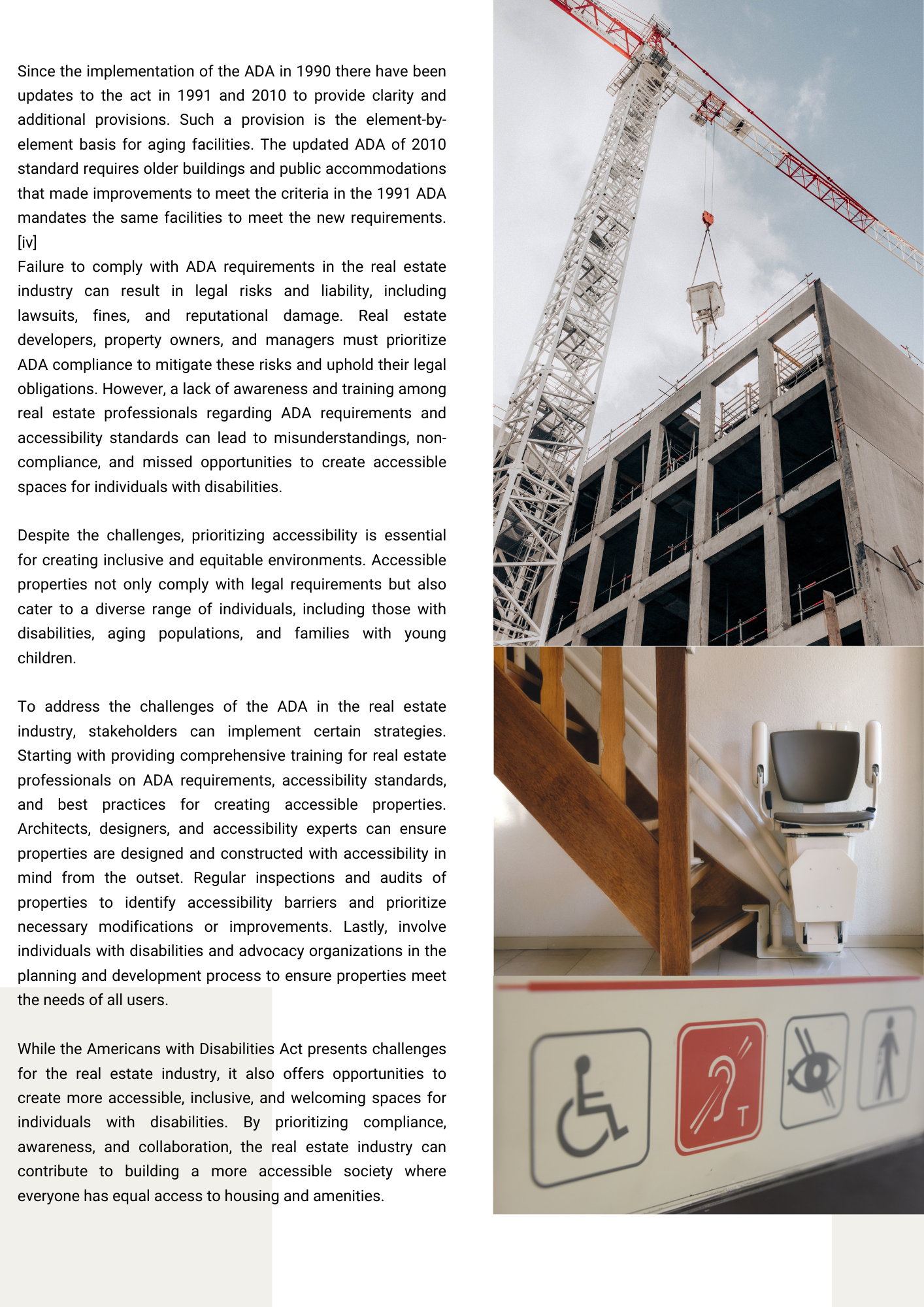ADA Series: Real Estate




In civil mediation, the challenges of the Americans with Disabilities Act (ADA) in the real estate industry can manifest in several ways, presenting unique considerations for resolving disputes and achieving mutually acceptable outcomes.
1. Accessibility Disputes:
- Barrier Identification: Mediation might involve identifying accessibility barriers in real estate properties, such as inadequate ramps, narrow doorways, or inaccessible amenities, which may violate ADA requirements.
- Negotiating Solutions: Parties tend to need negotiation solutions to address accessibility issues, such as retrofitting properties to comply with ADA standards, installing accessible features, or making reasonable accommodations for individuals with disabilities.
2. Compliance and Liability Concerns:
- Legal Compliance: Parties could dispute the extent to which a property is compliant with ADA regulations, leading to discussions about legal obligations, liability, and potential remedies for non-compliance.
- Risk Mitigation: Mediation can provide a forum for parties to explore options for mitigating legal risks and liability associated with ADA violations, such as reaching settlement agreements to address accessibility issues and prevent future litigation.
- Compliance Monitoring: Parties may agree to mechanisms for monitoring compliance with mediated agreements, such as periodic inspections, reporting requirements, or third-party oversight, to ensure ongoing adherence to ADA standards and accessibility requirements.
3. Communication and Understanding:
- Educational Needs: Mediation participants, including property owners, developers, and tenants, may have varying levels of understanding of ADA requirements and accessibility issues, requiring education and clarification during the mediation process.
- Effective Communication: Mediators can facilitate effective communication between parties, ensuring that all concerns, perspectives, and proposed solutions are adequately understood and addressed.
4. Collaborative Solutions:
- Stakeholder Engagement: Mediation possibly will involve engaging with diverse stakeholders, including individuals with disabilities, advocacy groups, real estate professionals, and legal representatives, to collaboratively identify and implement solutions that promote accessibility and inclusivity.
- Creative Problem-Solving: Parties involved may explore creative problem-solving approaches to address accessibility challenges, such as exploring alternative designs, technologies, or funding mechanisms to improve accessibility in real estate properties.
5. Implementation and Compliance Monitoring:
- Enforceable Agreements: Mediation outcomes could result in agreements outlining specific actions to be taken to address ADA-related issues, including timelines, responsibilities, and enforcement mechanisms to ensure compliance with agreed-upon solutions.
In the realm of civil mediation, addressing challenges related to the Americans with Disabilities Act in the real estate industry requires a collaborative and solution-oriented approach. By facilitating constructive dialogue, exploring creative solutions, and prioritizing accessibility and inclusivity, mediation can play a vital role in resolving disputes, promoting compliance with ADA regulations, and creating more accessible and equitable environments in the real estate sector.
[i] Americans with Disabilities Act: Guidance for Commercial Real Estate Owners (lexisnexis.com)
[ii] Understanding ADA Requirements for Historic Properties | GlobeSt
[iii] Understanding How the ADA Applies to Historic Properties < Southeast ADA Center (adasoutheast.org)